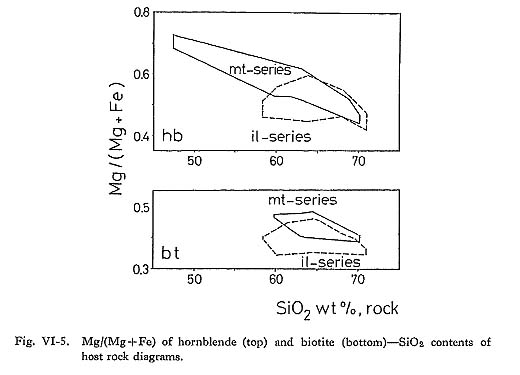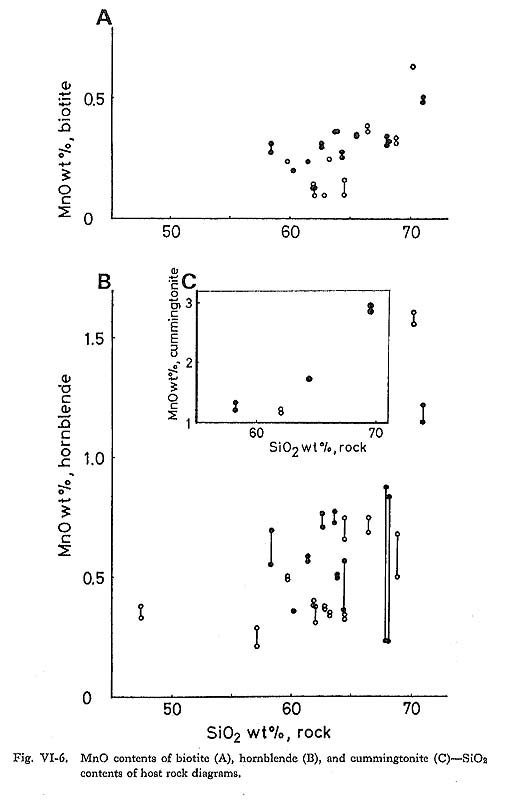CHAPTER VI
Mineralogy of the Tokuwa Batholith Rocks
2) Biotite
|
Biotite occurs as a euhedral to subhedral crystal of up to 5 mm in size or forms an aggregate of several grains associated intimately with hornblende grains. It frequently contains inclusions of ilmenite (magnetite), apatite, zircon, and plagioclase. It often alters slightly: biotite in magnetite-series rocks alters to an aggregate of chlorite, epidote, and ilmenite, whereas biotite in ilmenite-series rocks alters to an aggregate of chlorite, epidote, and sphene. The pleochroism of biotite in magnetite-series rocks is reddish to greenish brown, whereas that of biotite in ilmenite-series rocks is brownish red, as detailed below: Biotite in magnetite-series rocks: X': pale brownish yellow to pale yellowish orange; Biotite in ilmenite-series rocks: X': pale yellow to grayish yellow; The brownish tinge of biotite may indicate high TiO2 contents (see Deer et al., 1962). It occasionally has kink banding. Thirty-five representative biotite samples were newly analyzed by EPMA (Table VI-3). No compositional zoning was observed (Figs. VI-1-A and -H).
Compositional zoning may not have been present originally in biotite, or original zoning may have been obliterated by re-equilibration through cation diffusions during the postmagmatic stage. The Mg/(Mg+Fe+Mn) ratios of biotite in magnetite-series rocks (0.35 to 0.48; mean 0.43) are similar to those of biotite in ilmenite-series rocks (0.35 to 0.45; mean 0.41), and the Si content of biotite in magnetite-series rocks (5.20 to 5.91) is slightly higher than in ilmenite-series biotite (5.16 to 5.90) (Fig, VI-7). Tainosho et al. (1979) showed the same relation between biotite in granitoids from the Ryoke, San'yo, and San'in Belts: the former two belong to ilmenite-series and the last to magnetite-series belts.
The Ti contents of biotite in magnetite-series rocks (0.29 to 0.62) are slightly higher than those of biotite in ilmenite-series rocks (0.22 to 0.56). The Mn contents of biotite from magnetite-series rocks (0.01 to 0.09) has a wider range than that in biotite from ilmeniteseries rocks (0.03 to 0.08). The Mg content of biotite in magnetite-series rocks is slightly higher than in biotite in ilmenite-series rocks. Although a high biotite Ti content suggests complexity of composition, Figure VI-7 implies annite-siderophyllite-phlogopite-eastonite substitution. The analytical data on biotite in the Tokuwa batholith rocks were examined using a series of correlation diagrams and the following significant correlations were observed: Mg and Fe (negative correlation)
Biotite in magnetite-series rocks has a lower AlIV value than biotite in ilmenite-series rocks. The substitution (OH, F) 1 Ti + 2AlIV for Mg + 2Si A fairly good negative correlation between (Ti+2AlIV) and (Mg+2Si) for biotite in the Tokuwa batholith, as shown in Fig. VI-8, confirms that the substitution of Ti for Mg is compensated for by the substitution of AlIV for Si (type (1)). Morita (1970) reported on biotite compositions analyzed by H. Haramura of the University of Tokyo (Table VI-4): sample NM 65070902 collected from Tokuwa, Mitomi Village, probably belonging to magnetite-series granodiorite of the Tokuwa batholith and sample NM 65032301 collected from Hajikano, Yamato Village belonging to ilmenite-series granodiorite of the batholith. The SiO2 contents of host rocks are practically the same (67.8%, NM 65070902; 70.1%, NM 65032301). Haramura's analyses of biotite agree with those of this study. The compositional characteristics of biotite in the two series of rocks include the following: biotite in ilmenite-series rocks is generally enriched in AlIV and total Fe, and has a high Fe2+/(Fe2++Fe3+) ratio, whereas biotite in magnetite-series rocks is enriched in Si and Mg. Manganese, Ti, and total alkali contents are nearly the same; however, biotite in ilmenite-series rocks is enriched in K and biotite in magnetite-series rocks is enriched in Na.
The following possible relations between the bulk chemical compositions of host rocks the corresponding biotite compositions were found: (1) MnO contents of biotite increase with the increase in SiO2 contents of host rocks (Fig. VI-6-A). (2) The mg values of biotite slightly decrease with the increase in SiO2 contents of host rocks, and those of biotite in both series of rocks are quite similar (Fig. VI-5). This is contradictory to withthe findings of Czamanske et al. (1981).
The chemistry of biotite from the xenoliths of biotite hornfels (serial numbers 8-10 and 8-11 in Table VI-3) is nearly the same as that of host ilmenite-series granitoids. However, the MnO contents of biotite in the xenoliths are slightly higher than those in host rocks. |

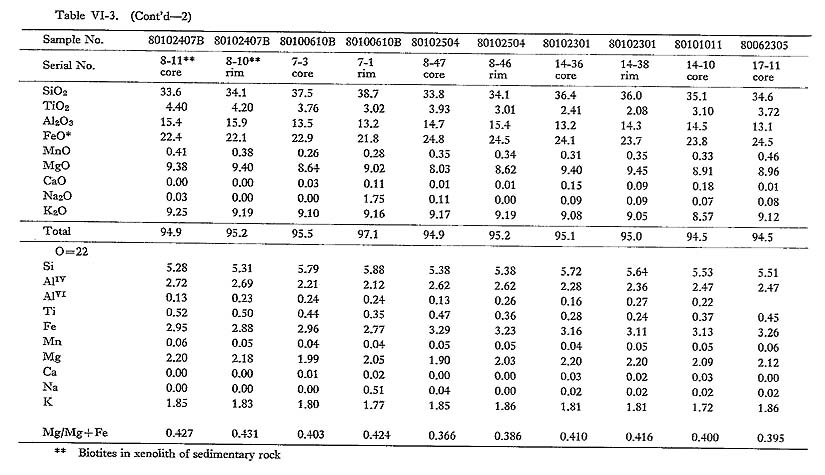
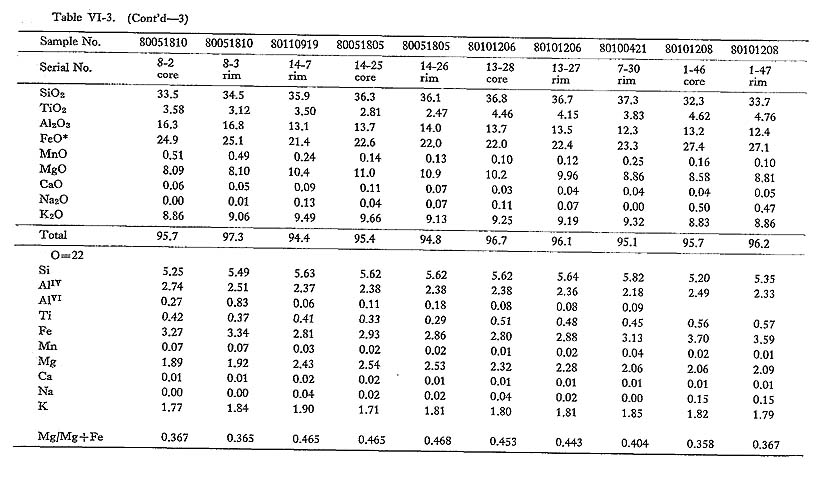
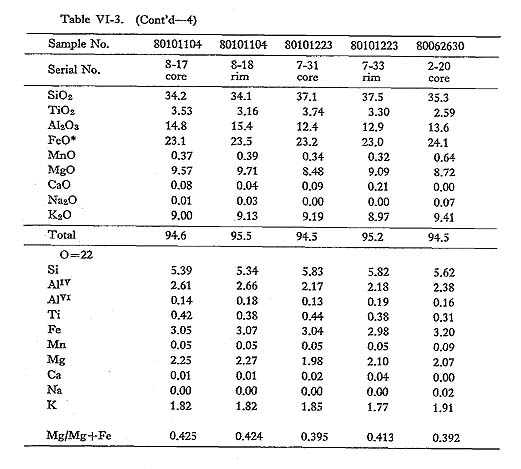
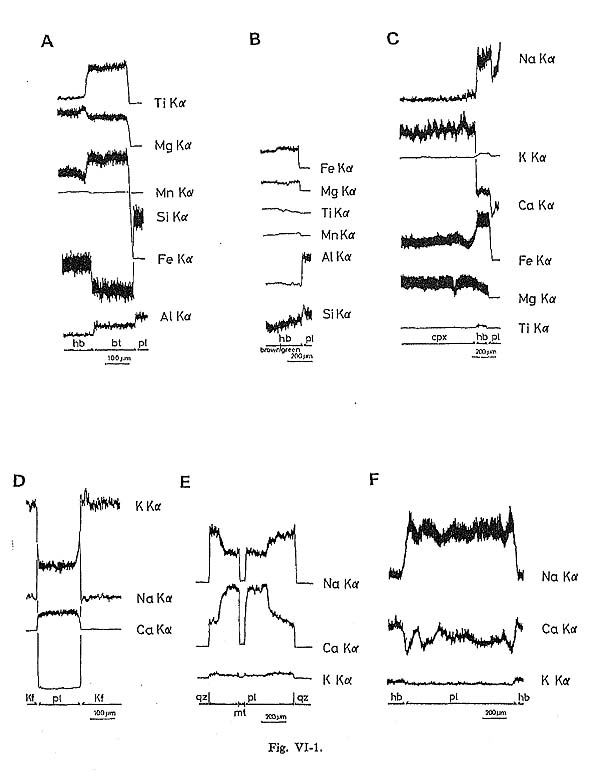
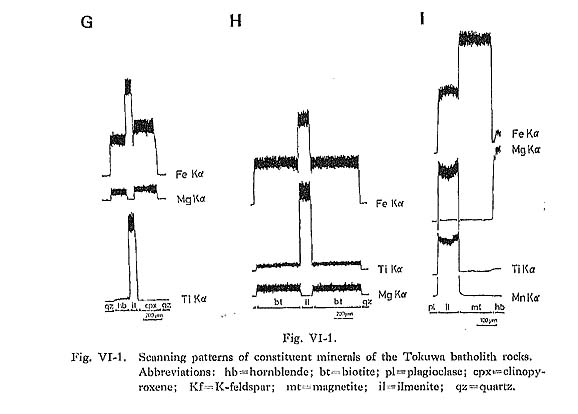
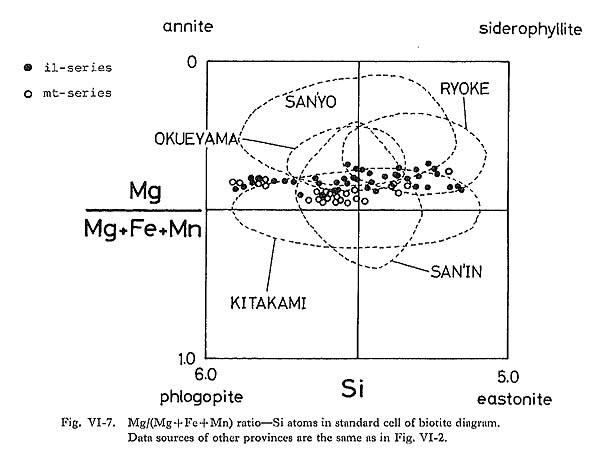
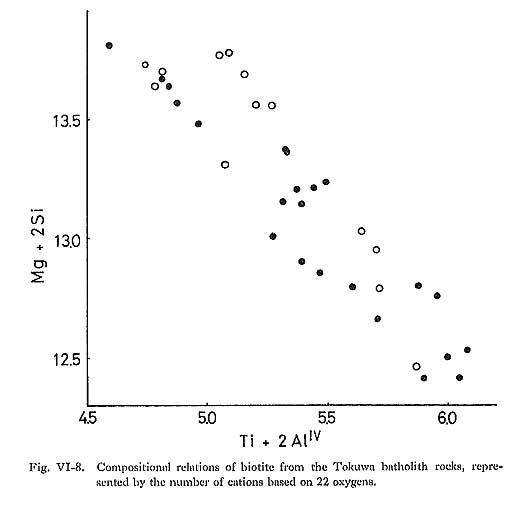
 O may have occurred in place of the Si
O may have occurred in place of the Si
